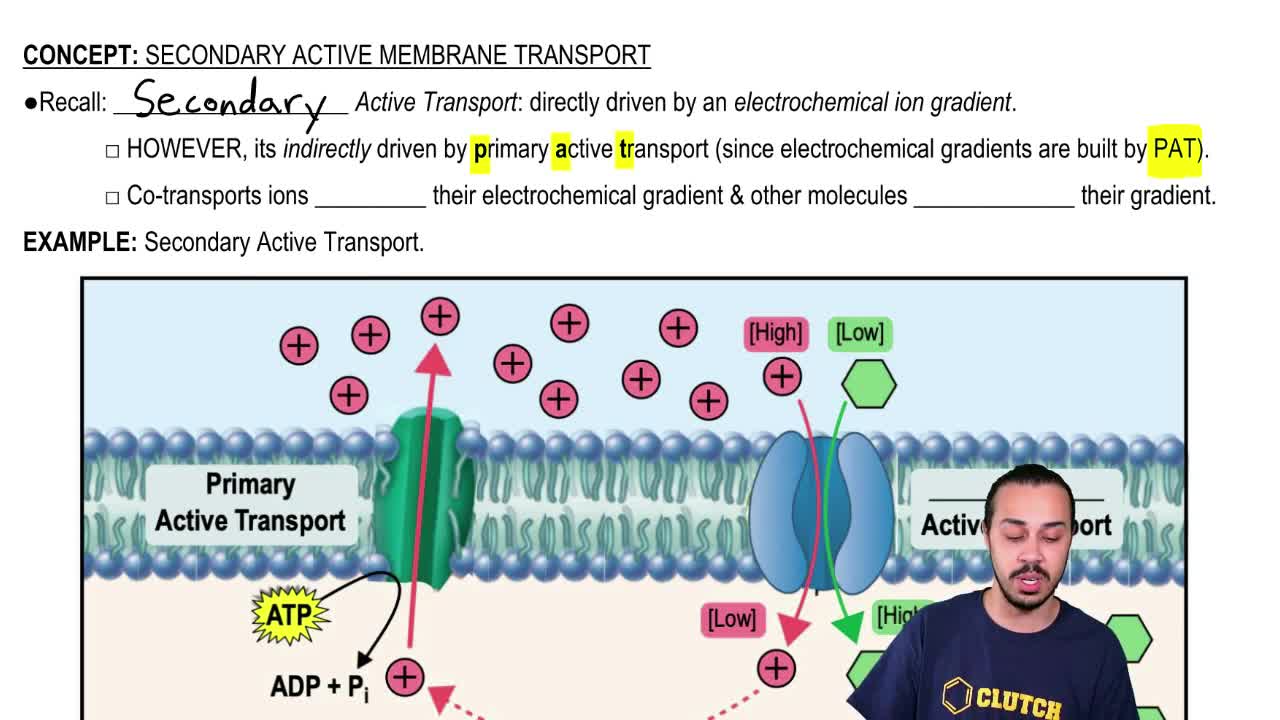Secondary Active Transport Explained

The process of transporting molecules across cell membranes is crucial for the survival and functioning of cells. Among the various transport mechanisms, secondary active transport plays a vital role in maintaining the balance of essential nutrients and ions within the cell. In this explanation, we will delve into the world of secondary active transport, exploring its definition, types, mechanisms, and importance in cellular functions.
Definition and Types
Secondary active transport is a type of active transport that involves the movement of molecules across the cell membrane against their concentration gradient, using the energy derived from the transport of another molecule down its concentration gradient. This process is different from primary active transport, which uses energy directly from ATP hydrolysis. Secondary active transport can be further classified into two main types: cotransport and countertransport.
Cotransport (Symport): In this type of transport, two molecules move in the same direction across the membrane, either both into the cell (inward symport) or both out of the cell (outward symport). An example is the sodium-glucose cotransporter in the small intestine, where sodium ions and glucose molecules are transported into the intestinal cells together.
Countertransport (Antiport): Here, two molecules move in opposite directions across the membrane. For instance, the sodium-potassium pump is an example of countertransport, where sodium ions are moved out of the cell and potassium ions are moved into the cell, both against their concentration gradients, but the energy for this process comes indirectly from ATP used to maintain the sodium gradient.
Mechanisms
The mechanism of secondary active transport involves transport proteins embedded in the cell membrane. These proteins can exist in two main forms: carriers and channels. However, for secondary active transport, carrier proteins (also known as transport proteins or permeases) are primarily involved.
- Binding: The process begins with the binding of the molecule to be transported (along with its co-transported molecule in cotransport systems or counter molecule in countertransport systems) to a specific site on the carrier protein on one side of the membrane.
- Conformational Change: After binding, the carrier protein undergoes a conformational change, which allows the release of the molecules on the other side of the membrane. This conformational change is crucial for the transport process, as it enables the protein to switch between states with high and low affinity for the substrate.
- Energy Coupling: The energy required for this transport comes from the movement of the co-transported molecule down its concentration gradient. In many cases, this is a Na+ (sodium ion) gradient, which is maintained by the sodium-potassium pump (an example of primary active transport).
- Transport Against the Gradient: As a result of these processes, the molecule of interest is transported against its concentration gradient. For cotransport, both molecules move in the same direction, while in countertransport, they move in opposite directions.
Importance in Cellular Functions
Secondary active transport is vital for various cellular functions, including:
- Nutrient Absorption: It plays a critical role in the absorption of nutrients from the digestive tract, such as glucose and amino acids, into intestinal cells.
- Ion Balance: It helps maintain the balance of ions within the cell, which is essential for maintaining proper cell volume, membrane potential, and the functioning of various cellular enzymes.
- Signal Transduction: Some secondary active transport mechanisms can influence signal transduction pathways by regulating the concentration of certain ions or molecules that act as signaling molecules.
- Waste Removal: It can also be involved in the removal of waste products from the cell by transporting them against their concentration gradient out of the cell.
Clinical Relevance
Dysfunctions in secondary active transport mechanisms can lead to various diseases and conditions. For example:
- Cystic Fibrosis: Caused by mutations in the CFTR (cystic fibrosis transmembrane conductance regulator) gene, which encodes a chloride channel and affects ions and water transport across epithelial cell membranes.
- Diarrhea and Constipation: Imbalances in ion and water transport in the intestines can lead to these conditions.
- Neurological Disorders: Alterations in ion balance and transport across neuronal membranes can affect neurotransmitter release and synaptic function, potentially leading to conditions such as epilepsy or migraine.
Conclusion
Secondary active transport is a critical process that facilitates the movement of essential molecules and ions across cell membranes, utilizing the energy from concentration gradients of other molecules. Its role in nutrient absorption, ion balance, signal transduction, and waste removal underscores its importance in maintaining cellular homeostasis and overall health. Understanding the mechanisms and regulation of secondary active transport not only deepens our knowledge of cellular biology but also provides insights into the pathogenesis of various diseases, offering potential targets for therapeutic interventions.
What is the primary difference between primary and secondary active transport?
+The primary difference is the source of energy. Primary active transport directly uses ATP (adenosine triphosphate) for energy, whereas secondary active transport uses the energy from the movement of another molecule down its concentration gradient.
Can you give an example of a secondary active transport process in the human body?
+An example is the sodium-glucose cotransporter in the small intestine, which simultaneously transports sodium ions and glucose molecules into intestinal cells. This process is essential for glucose absorption and uses the energy from the sodium gradient maintained by the sodium-potassium pump.
What happens if secondary active transport mechanisms fail or are impaired?
+Impairments in secondary active transport can lead to various diseases and conditions, depending on the specific transport process affected. Examples include cystic fibrosis, certain forms of diarrhea or constipation, and neurological disorders. The consequences can range from mild to severe and depend on the critical role the affected transport mechanism plays in cellular or organ function.

